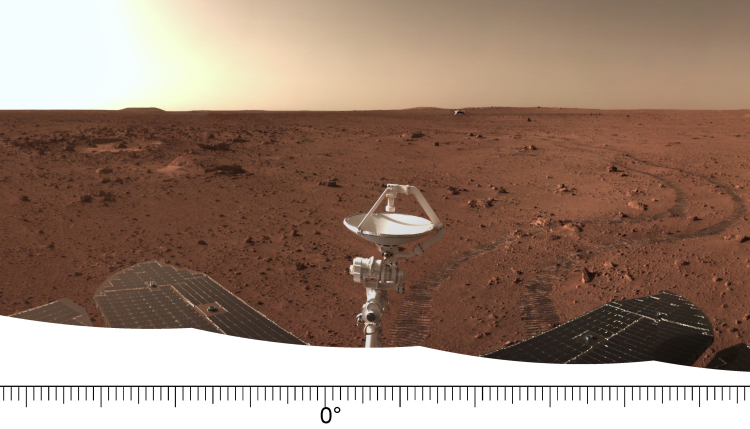Dust covering solar panels threatens to end InSight mission
The InSight science team has revealed that the amount of dust that presently covers the solar panels on the Mars lander has now reduced their available power by about 80%, and if a dust devil doesn’t soon blow the dust off they will have to shut the spacecraft down sometime in the next ten months.
“The dust accumulation on the solar arrays has been considerable. We have about 80% obscuration of the arrays,” said Bruce Banerdt, principal investigator for the InSight mission at NASA’s Jet Propulsion Laboratory (JPL) in Southern California, according to SpaceNews.
Banerdt showed the impact of the declining power levels during a June 21 meeting of NASA’s Mars Exploration Program Analysis Group. When InSight landed near the Martian equator in November 2018, he said, the robot was generating roughly 5,000 watt-hours of power. Today that level is less than 700 watt-hours.
None of this is a surprise. Both the Opportunity and Spirit rovers faced the same problems. Both however were able to recover because periodically a dust devil would fly over the rover and clear the dust from the solar panels.
InSight however has not so far been lucky. While it has seen many nearby dust devils with its camera, none has come close enough to sweep the solar panels clean.
As the power has declined they have shut off various systems in order to keep the lander’s prime instrument, its seismometer, operating continuously. Engineers have also been using the scoop on the lander’s robot arm to try to dislodge some of the dust, with only a very very limited success. If the panels are not cleared soon, however, engineers will eventually be forced to shut everything down.
The InSight science team has revealed that the amount of dust that presently covers the solar panels on the Mars lander has now reduced their available power by about 80%, and if a dust devil doesn’t soon blow the dust off they will have to shut the spacecraft down sometime in the next ten months.
“The dust accumulation on the solar arrays has been considerable. We have about 80% obscuration of the arrays,” said Bruce Banerdt, principal investigator for the InSight mission at NASA’s Jet Propulsion Laboratory (JPL) in Southern California, according to SpaceNews.
Banerdt showed the impact of the declining power levels during a June 21 meeting of NASA’s Mars Exploration Program Analysis Group. When InSight landed near the Martian equator in November 2018, he said, the robot was generating roughly 5,000 watt-hours of power. Today that level is less than 700 watt-hours.
None of this is a surprise. Both the Opportunity and Spirit rovers faced the same problems. Both however were able to recover because periodically a dust devil would fly over the rover and clear the dust from the solar panels.
InSight however has not so far been lucky. While it has seen many nearby dust devils with its camera, none has come close enough to sweep the solar panels clean.
As the power has declined they have shut off various systems in order to keep the lander’s prime instrument, its seismometer, operating continuously. Engineers have also been using the scoop on the lander’s robot arm to try to dislodge some of the dust, with only a very very limited success. If the panels are not cleared soon, however, engineers will eventually be forced to shut everything down.












